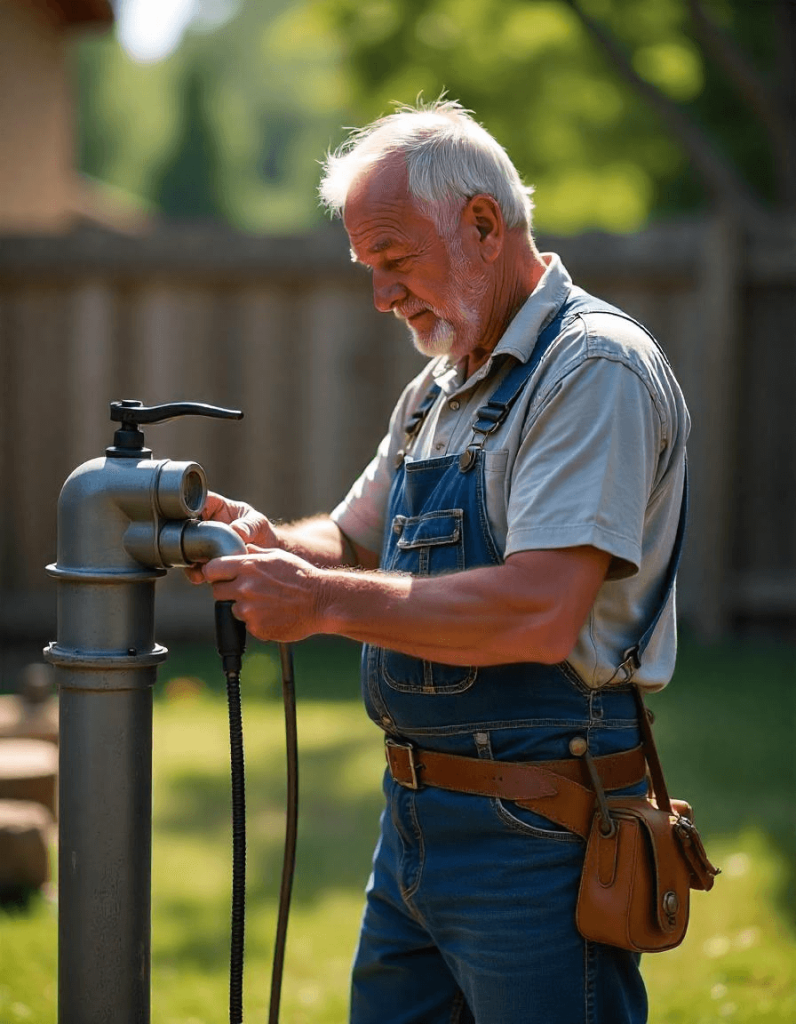Mar 7, 2025
The Ultimate Guide to Well Pumps: Reliable, Efficient, and Essential
Because they guarantee a reliable supply of water, well pumps prove invaluable in this modern age. A good well pump will always deliver results, whether it be for your home, farm, or business. Choosing the right pump means saving money in the long run, while making sure that water supply is uninterrupted, that water is always supplied under the required pressure, and that energy expenditures are optimally low. This article aims to tackle the different types of well pumps, their parts, and the steps necessary to make sure they are always on top form.
Types of Well Pumps: Choosing The Right One
- Jet Pumps: Power And Versatility.
As with all types of pumps, jet pumps are designed to work hard, and enable users to go for long periods of time without worrying about durability. They use strong suction that works for any well depth.
Shallow Well Jet Pumps: Effective and Economical. For wells up to 25 feet deep, these pumps serve as a reliable and economical water source.
Deep well jet pumps are powerful enough to provide water not only for houses, but also for farms, and can work with wells that are 100 feet deep.
Jet pumps are above ground, which means they are easier to service. With adequate priming and maintenance, they ensure reliable performance.
- Submersible Pumps: Maximum Efficiency.
Submersible pumps are designed for long-term high performance and reliability.
They are installed inside the well, underwater, and they push the water to the top which results in:
Lowered energy consumption and higher efficiency.
Seamless and quiet functionality.
Requires minimal upkeep for long term care.
Some of these pumps function in wells deeper than 25 feet and others can reach 400 feet or more!
- Convertible well pumps are the best form of dual-functioning pumps.
These pumps are capable of functioning as both shallow and deep well pumps. 10 feet? Or 80 feet? Give it as much as you want, and convertible pumps will comply easily.
- Hand pumps: Resourceful and dependable.
These pumps are really helpful for off-the-grid living, emergencies, and rural areas. They are manually operated and make clean water accessible in the absence of electricity – a lifesaver in desperate situations.
- Future of solar-powered well pumps is in their water supply capability.
Harness the power of the sun! Solar powered well pumps are revolutionizing water supply for their energy efficiency and sustainability making them the ideal solution for off-the-grid areas as they provide a reliable, eco-friendly water source without the needless expense of electricity.

Essential Aspects of a Well Pump System with High Performance.
Pump Motor: A motor is the working part of a pump system and efficiently manages water flow.
Impellers: Performs the task of moving water.
Pressure Tank is responsible for providing consistent water pressure and reducing the wear on the pump.
Control Box takes the responsibility for the motor functionality in deep well pumps.
Foot Valve: Improves efficiency by preventing backflow.
How to Choose a Well Pump: Good Thinker.
The well depth determines what pump can be used most efficiently.
GPM Flow Rate: 8-12 GPM will be optimum to meet requirements of the household.
Select electric, solar, or manual powered options for the power source.
Stainless steel pumps being more resistant to corrosions, give better durability and longevity.
With proper investment in the greater pump, dependable water delivery would be guaranteed for years without any difficulties or expenses.
Maintenance and Troubleshooting: Well Pump Care
For optimum efficiency, regular maintenance is a must. However, look out for these problems:
Always Check With 1. Low water pressure? No problem.
- Clogged pipes or filters might be the reason.
- The pressure tank might be leaking.
- Care must be taken to ensure clean and functioning impellers.
Have you noticed the pump running disrespectfully nonstop? Fix it quickly!
- System leakages need to be inspected.
- Pressure switch needs adjustment or replacement.
- Change expectations if the pump isn’t capable of meeting demand.
No water flow? Stay on top of issues!
- Assess for dry well and low water level.
Take out any obstruction in the impeller or intake screen. Also, check the motor for any electrical faults. 4. Is there air inside the water lines? Get Clear Water Instantly! Look for and fix the broken foot valve. Fix any broken pipes that are visible and could be leaking air. Prime jet pumps to eliminate airlocks.
Align maintaining as a priority for greater results.
Always change your filters as well as the screens.
Check the wiring as well as the pressure switches from time to time.
Keep the area around the system free from litter and build-up. Empty jet pumps of any piping less than satisfactory in performance.
A well-maintained pump gives superior quality, energy saving, and reliability for a long time.
Conclusion: Allocate your water worry free.
Your well pump is the heart of your water system; choose wisely, maintain it regularly, and you will enjoy years of uninterrupted, high-quality water. Any submersible or jet pump or even a solar powered pump offers an option to serve your need. Without regular maintenance, your pump will wither above waste deep muddle and dirt.
Do the needful, and free your water worries, forever!
Read more: The Ultimate Guide to Well Pumps: Reliable, Efficient, and Essential Minnesota Yard Customizing – Custom Yards, Crafted with Care.
More Details
